#australorp hen
Explore tagged Tumblr posts
Text

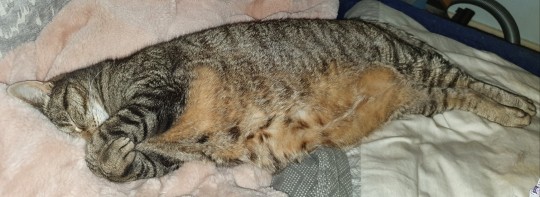
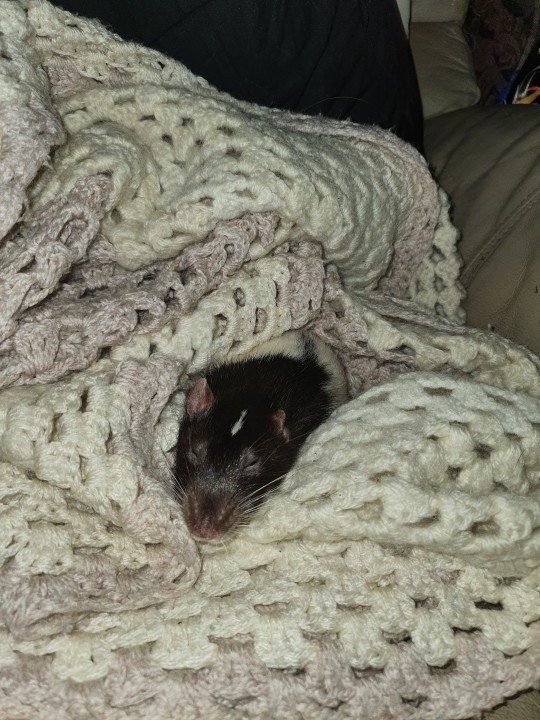
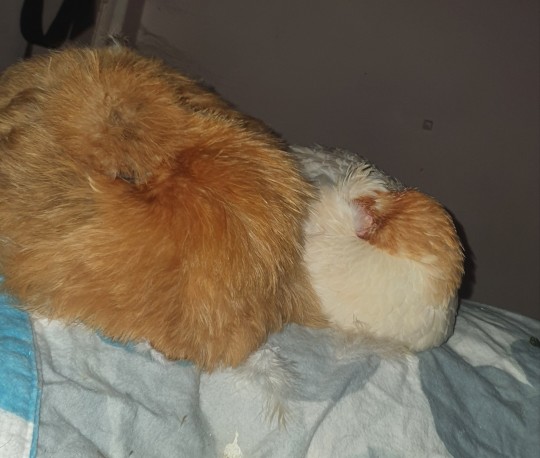
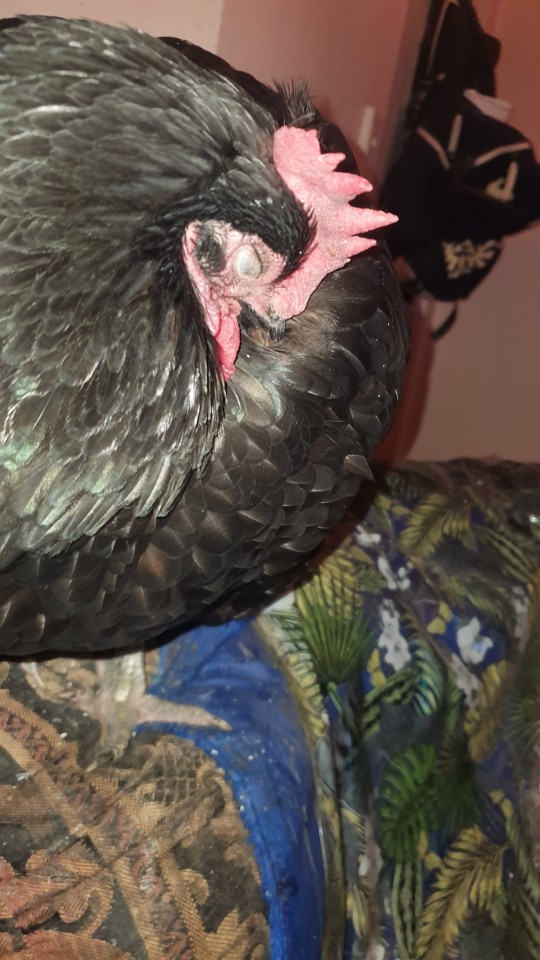
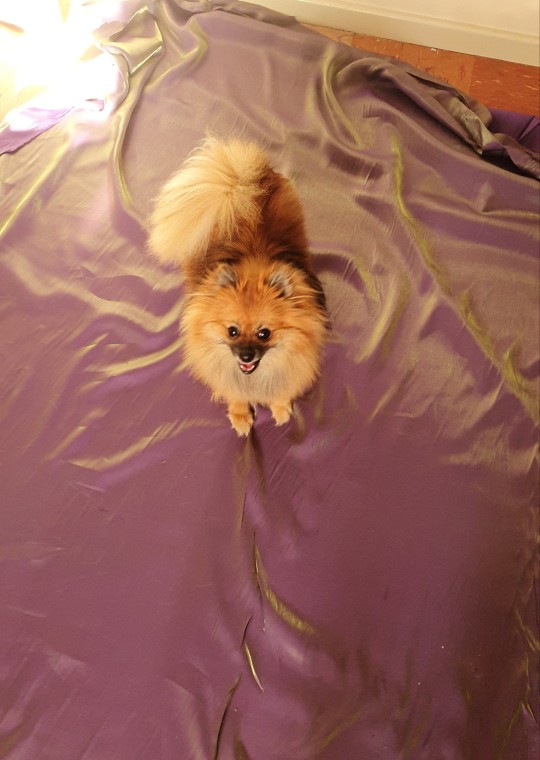
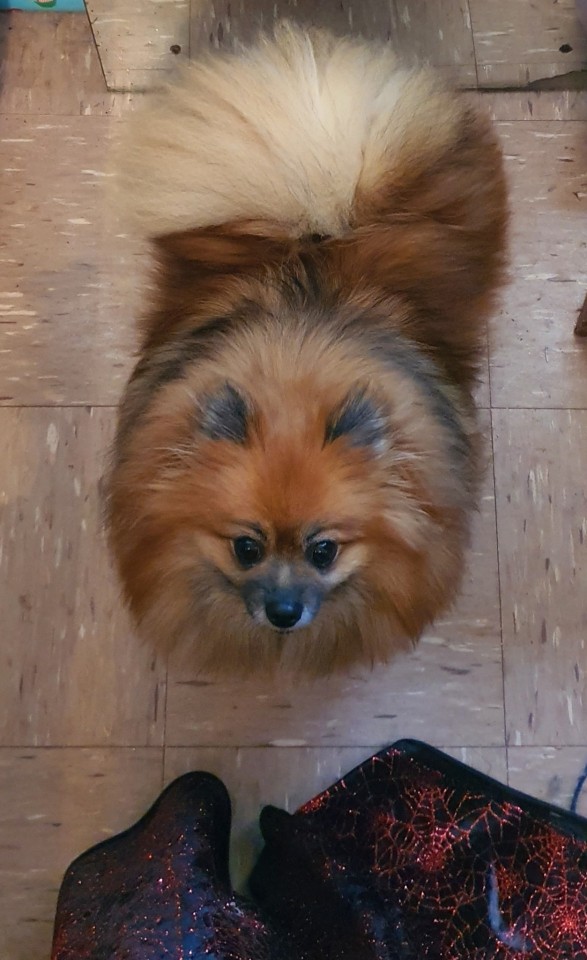



Meet my babies. The first cat is called Wellybean and she is 14, the second cat is called Pumba and she is 13, the black hooded rat is called Arlo and he is 2, the two chickens with their head behinds their wings are called P-1 and stalky, the black chook is called Orby and she is 11, the sable pomeranian is called Saqqara and she is two and a half, the poodle is called Pumpkin and he is 5 (please excuse his dirty face as my clippers were broken and I couldn't save his face) and the last rat is Snoze and he is also 2, he favourite place to sleep in on my left boob 😅. I do have more babies but they only let you put 10 pics at a time so I will upload more later.
#babies#pets of tumblr#my pets#chickens#poodle#pomeranian#silkie bantam#cats#dogs#rats#black hooded rat#australorp hen#Orby#Wellybean#pumba#chooks#love my babies#mean more to me than my own family#toy poodle#chinchilla#oldies
0 notes
Text
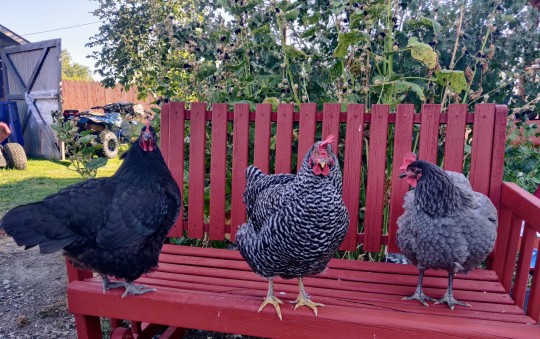
Chimken printer running out of ink
#backyard chickens#chickenblr#chickens#backyard hens#chooks#pullets#barred plymouth rock#sapphire gem#black australorp#chimken#chikn#birbs#birblr#birb
126 notes
·
View notes
Text

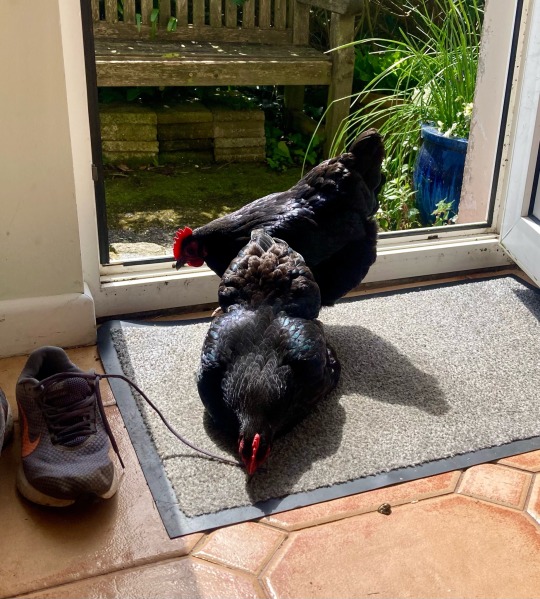
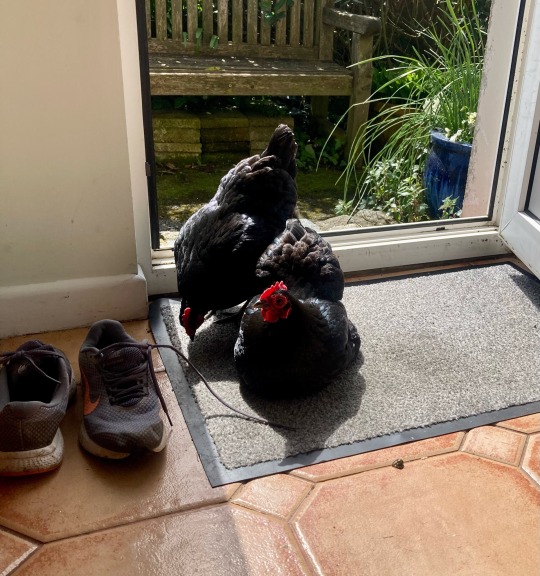
They just love to be on the doormat
21 notes
·
View notes
Text
Australorp & Leghorn Chickens
#youtube#fyp#wildlife#wildlifephotography#animal photography#nature#nature photography#wildlife photography#animals#nature photoshoot#australorp#foghorn leghorn#chicken#hens#barnyard#birdsphotography#birdlovers#bird photography
0 notes
Text

Zero filters. This is my Black Australorp hen. Just gorgeous 💚💙💜🖤
24 notes
·
View notes
Text
It's been a very long time since I've been active so I wanted to make a quick little list of everyone I still have — with updated photos, especially!
I no longer live with my chickens — I moved out in December 2023 and had to leave my chickens behind, as I live in an apartment now. They still live with my parents so I still get to see them and certain responsibilities like their health and cleaning the coop are still mine.
Recently I split the flock and gave half of my chickens to a family friend who I trust will take good care of them, because my parents haven't taken care of them to my satisfaction.
Here are the chickens who, for one reason or another, remained here.

Bee — Blue Laced Red Wyandotte, born May 2018. Honestly the worst at doing a rooster's job, but I love him anyway. He's very shy and very cute, can be a bit of a bully towards other chickens but is super well behaved with people!

Florence — Blue Laced Red Wyandotte, born May 2018. Softest, fluffiest bird imaginable. It doesn't fully come across in photos but her feathers are incredibly plush! She's a bit nervous and seems lazy. It's part of her charm!

Adelaide — Black Australorp, born May 2018. A very calm bird with a surprisingly raucous voice. She adores Bee and never leaves his side, and always snuggles up next to him at night.


Tofu & Dumpling — Gold Laced Wyandottes, born June 2023. Two babies I accidentally acquired and they've been here ever since. They're always together! Quite shy since they didn't get handled much growing up, but naturally very curious so they'll approach anyone they find interesting. They like exploring the yard and the edge of the woods together.
~
The rest of the chickens in this list have been moved to their new home, where I will still be visiting them.

Midnight — Gold Laced Wyandotte, born March 2013. My old lady! Calm and sweet, she took a shine to the younger chickens right away when they were little. At feeding times she usually calls the other hens over to come eat like they're her babies. She started doing this in the past year or so and I'm not sure why. It's very cute though.

Moth — Barred Rock, probably born in 2018. Got her as an adult from my neighbor when he stopped wanting chickens so her age is an estimate. Survived a fox attack some years ago and lived in my room for two months while recovering, and she became a dear sweet bird in that time! She likes to follow people around and observe them.

Magpie — Dominique, born May 2018. Nosy bird who likes to be in the middle of whatever I'm doing! She makes noises like a squeaky wheel instead of clucking, which is very entertaining.

Crow — Dominique, born May 2018. Looks like a barred rock because of her single comb, but she is about two-thirds the size of one. Very small! Little baby who wants to be held and carried all the time. Likes to walk up to the nearest person and stand on their feet until she gets picked up, and she'll eventually start pecking my legs if I ignore her!

Dawn — Silver Spangled Appenzeller, born May 2018. Independent and energetic, she's always wandering off to explore as soon as she gets the chance. Gets along with people better than with other chickens. She's always finding her way onto my lap or, preferably, into my sweater.
2 notes
·
View notes
Text
Wilson does NOT have an Australorp

1. Too big of a comb
2. Australorps in the US are black
That is a large breed, solid white dual purpose hen. I believe it's a New Hampshire white

#they havent specified House's chickens breed yet and i believe his is a well bred RIR#which. i wouldnt choose a Rhode Island red for a 'how long can we keep this chicken hidden' bet
4 notes
·
View notes
Text
Btw y'all we started hatching some chicken and we have no clue what breed they are because
1. We have an austra white hen, a red faced silkie hen, a Brahma hen, a black australorp/black sex link hen, a barred rock hen, a booted Bantam rooster (white yellow grey), and a black laced gold wyandotte rooster.
And 2. We don't know which eggs are coming from who so 3 of the current chicks are black with speckles and 2 are sorta cinnamon coloured
Honestly it's insane how these guys look and I can't wait to figure out what they are when they're older (current photos ⬇️)

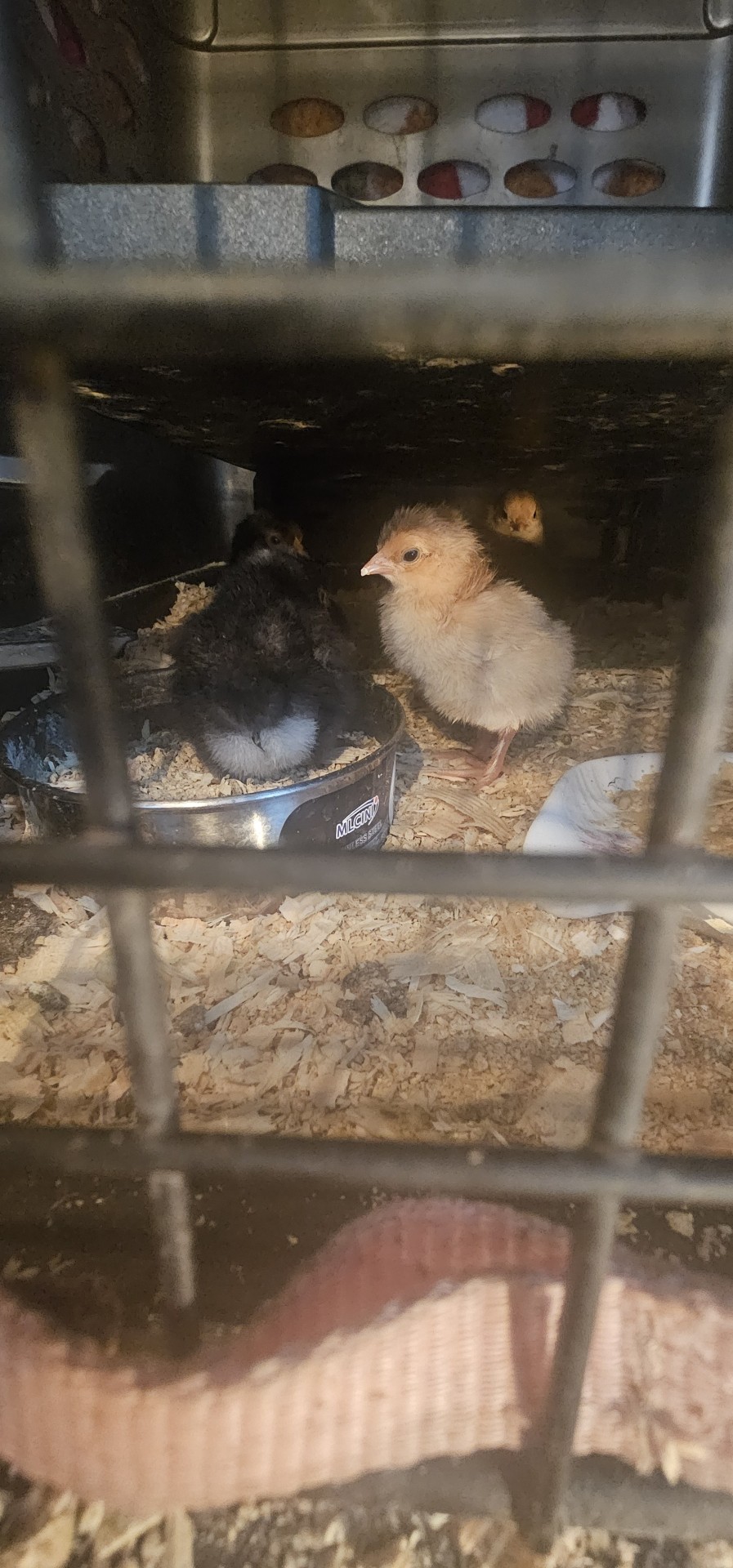





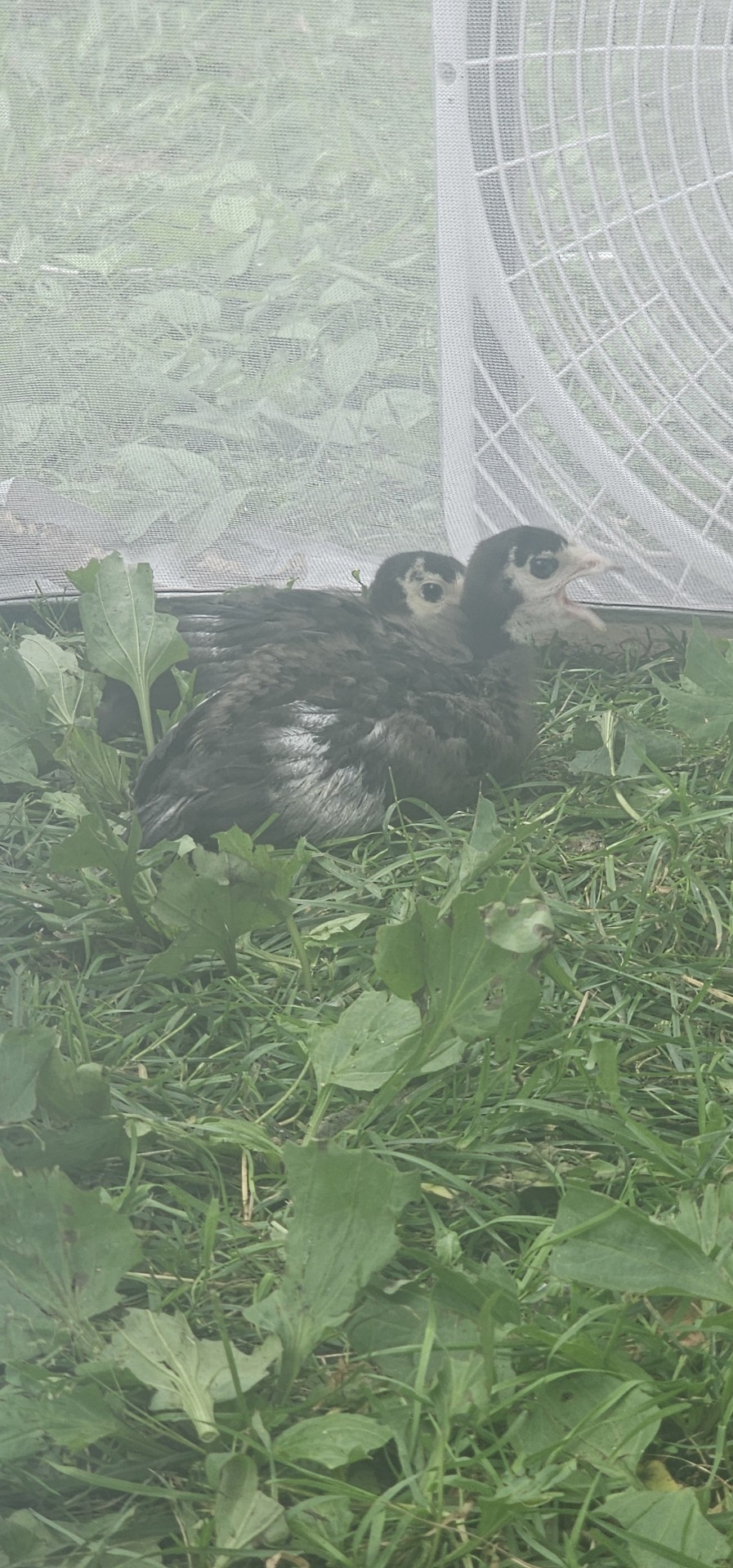

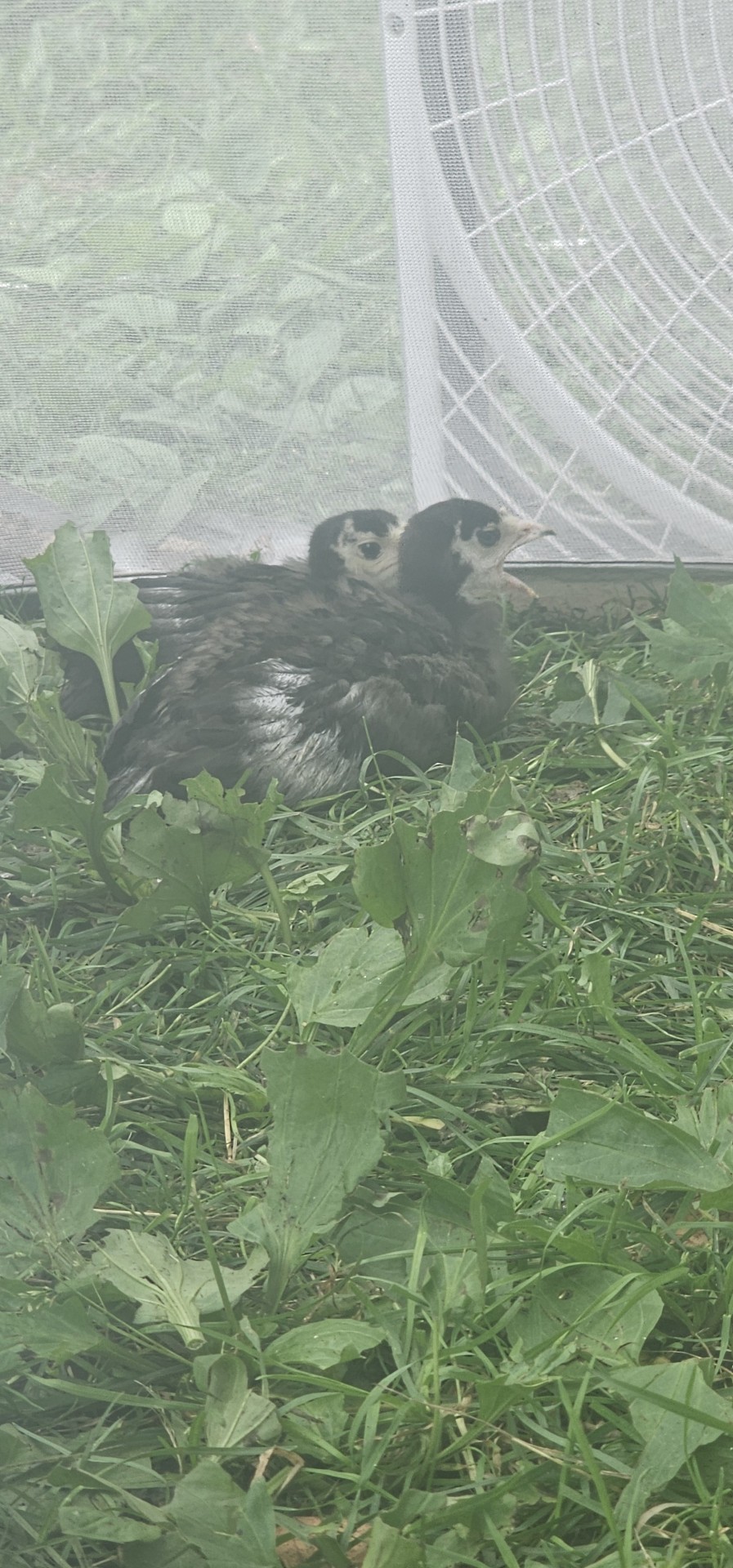
#sorry im ranting again#poultry and farm birds in general are my favourite things#btw the emo turkeys are getting so big now#they so goofy#farmer rant#idk if i really count but yknow#also we have 4 guinea hens too#idk if i mentioned them#and some younger chickens too#theres 5 silkies-3 barred rock or smthn-a white headed black bodied one (cant tell what she is)-a booted bantam hen-and another black breed#i cant identify them rlly#we got so many birds rn
2 notes
·
View notes
Text
Funny story: today I rescued a chicken.
This got kinda long but it is fairly funny and has a happy ending. Also there is Thunder and Birds involved, but not in the usual way. And I have no one to give the blow-by-blow account of the saga to, and I Need to Tell Story. So dear friends, *drags you to sit around my figurative fireplace* enjoy my tale!
(Minor warning of reference to past animal death.)
Because the universe really does have a sense of humour, this all started when I was sitting outside, because it was a nice sunny day, while reading @gaviiadastra's 'Chicken Dad' series. (its great, Im only 5 chapters in, go read it!)
And then I hear loud chicken clucking noises. Which I am understandably very surprised to hear. There is some *looks at laptop* *looks up again* "What the fuck???"
So I go out to investigate. I find a chicken. A very cute, fairly large black hen with the slightest green sheen to her feathers. In all likelihood a Black Australorp.
Outside my yard, just chilling. And still bok-bok-boking loudly.
And I'm like, "huh." And wow, that was not just my imagination.
Now backstory time: My family used to keep chickens, a small flock of them living happily in our yard. I loved them very much, and I kinda still miss them even though it was years ago now. They also had ridiculous triple-barrel names.
Tragic backstory time: One of our chickens got eaten by a fox. (it was extremely upsetting, the chicken was our friend.)
There are also a whole bunch of outdoor cats around the neighbourhood, and a highway nearby, and generally a lot of dangers to escapee chickens. So I'm understandably pretty worried about this chook, because its also lateish afternoon and will get dark. And just leaving it there really doesn't fly with me.
Time for the rescue plan: I'm going to catch that chicken, then figure out where it lives and return it. Because I vaguely remembered some neighbours keeping chickens, and a door knock around should point me in the right direction. (Or if not, I get to keep chickens again, y'know, if it still needs a good home.)
I put shoes on, because stomping around in my slippers is likely ill advised, grab a crust of bread because it the best chicken attracting thing i can quickly find, and yell to a family member where i'm going, getting the underwhelming response of, "Uh huh, sure."
Plan A: Lure chicken close to me with bread and catch it once it is in arms reach.
There is some throwing of pieces of bread, me making inviting clucking noises (actually one of my talents, I have fooled people with it before,) me staying very still, the chicken slowly coming closer.
Eventually the chicken is pecking the bread piece from my hand. I take my moment. My fingertips brush feathers. The chicken runs off. Note to self: chickens are fast and I'm very out of practice at chicken nabbing.
Takes two through like eight or something: Lure chicken in, gain its trust, wait until it gets really close, then catch it.
And nope. The chicken is having None Of That. It still gets a fair bit of bread bits, thrown out around me. And its having a merry old time, wandering around, pecking at grass, and being adorable. (I really like chooks, they're cute.)
By this point my butt's gone numb and my shitty knees are Complaining. And I've been at this more than half an hour, like seriously, this chicken has mastered the art of 'close enough for snacks, but not close enough to get got.'
And I am Very Patient (in some circumstances, such as these, though not all), but I can also hear thunder as a storm is coming in. And this clearly isn't working. And the chicken is wandering away. And I'm at least ten times its size and supposedly the cleverer one here.
So onto Plan B: Get me close to the chicken. Catch the darned chicken.
I get up, shove the bit of bread in my pocket, stretch, then calmly walk after the chicken. Because panicky chicken could definitely out-sprint me. And we're gonna avoid that. I'm also hoping the whole 'persistence predator' thing pays off.
Additional context notes: I live right next to a park. Sort of. There's several metres of rocky cliff between the row of houses and the park. And a narrow strip of land between said cliff and houses. Which is where me and the chicken are, of course.
So there is the additional difficulty of 1) dont chase chicken off cliff (the chicken would be fine, its only couple of metres high and it has unclipped wings. Also would be new problem of chicken running loose in big park.) 2) dont fall off cliff because i dont want to explain it to family/curious strangers/paramedics that this was all because of a chicken.
There is a lot of very careful manoeuvring. Some tactical retreats because that chicken really likes that cliff edge. An amount of bush bashing. Some strategic climbing of slopey parts where it's not so cliff steep. I run into sticks and tree branches and spiderwebs. I Follow That Chicken.
There is a stand off. A rout. I direct the chicken towards the houses and manage to corner it with a fence. And then I've got an armful of somewhat flappy chicken until I get the wings under control. Then I've just got a chicken. A very sweet chicken who is now pretty chill with being held.
Return of the Chicken: It's the first house I go to. I ring the bell, no one answers. I wander round the side a bit thinking maybe I ended up at the back door with all the chicken chasing. A dog spots me in the window and starts barking. So I stand there to wait for that to get someone's attention because I'm 90% sure its the right house.
Person appears in window. Me: *waves* *points at chicken*
Epilogue: It was confirmed that the chicken belonged there. The person was very grateful for the return of their chicken. And wasn't too put out by a rando showing up at the door with a chicken in their arms. Me in my red chequered flannel and possibly covered in leaves. The chicken did not have a name, I asked. I suggested Jailbreak as a suitable one.
I gave the chicken one last pat then handed her over (somewhat reluctantly. She was a very soft, fluffy, lovely chook) (and I named her.) (I really miss having chickens, if you can't tell that already.)
I went home and after a while it stormed, seriously like right on top of us with no break between thunder and lightning. Very glad I got the chicken before that. And got inside. I also won't tell you how long it took to find the bread still in my pocket but I'm very glad it didn't go through the wash. Now I blogged on tumblr about it.
And so the chicken rescue saga comes to an end, with all parties safe and dry and no one even fell off a cliff. Also I got to hold a chicken and that was a major win for my day!
*THE END*
#thunderfam#chickens#enjoy my ridiculous story and shenanigans!#commentary on my rescue skills is highly encouraged#also i could totally see one of the Tracy's being this silly#but I saved the chicken!
16 notes
·
View notes
Text
The tale of Zealand AKA three sex-linked genes explained in one post
Now that you know of three of the four most common sex-linked chicken genes, let me tell you a tale...
At sunset one August night, a couple Dominique hens, an Australorp hen, and a Faverolles hen were plotting. They hatched a plan, hoping to hatch eggs. Sneaking into a chick delivery box with fake straw, seeming much like a nesting box, they layed their eggs. Zealand decided to take it under herself to hatch these chicks. Weeks passed by. Somehow, none of my family had noticed she was missing every night, we had just assumed she wasn't missing at all, because we saw her every day when she came out. For five days we were on vacation, and since we locked the coop while we were gone, Zealand had to forage for herself. Four days before the hatch of the eggs, I FINALLY noticed she didn't come in at night. It took two days of spying on her to discover where her nest was, because she would loiter for hours, almost making me think she didn't have a nest, but she kept puffing herself up like a broody. I candled her eggs, and they looked old, so I didn't think they would hatch. But they did, over the course of a week. My family got rid of most of the chicks, because of them being crossbred, but we kept a few, including one that had the down color of a quail d'Anver, since I wanted to study its parentage. It turned out to be Starling, one of the most beautiful hens on the farm.

Starling was rather special, because her parentage means she was a three-way sexlink.
Her father was a blue wheaten Ameraucana. Let's ignore the blue part though. He had slate shanks. This is his genotype, the parts that are relevant anyway: e^Wh/e^Whml+/ml+s+/s+b+/b+id+/id+
These are the three sexlinked genes he had: s+/s+ gold, b+/b+ non-barred, and id+/id+ dermal melanin.
Her mother was Zealand, a Dominique bantam. Her coloring was barred. She had yellow shanks. Here is her genotype:
E/EMl/MlS/-B/-Id/-
These are the three sex-linked genes she had S/- silver, B/- barred, and Id/- dermal melanin inhibitor.
Now here is Starling.
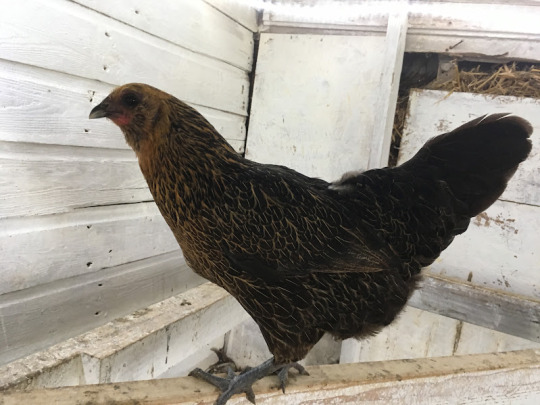
Her genotype was E/e^WhMl/ml+s+/-b+/-id+/-
She inherited her three sexlinked genes from her father: s+/- gold, b+/- non-barred, and id+/- dermal melanin.
She also inherited a Ml Melanotic allele and an E allele from her mother, which interacted with the id+ gene to give her a dark purpley colored face and deep brown eyes.

Now, if she had a hypothetical brother, he would look very different.

He would be: E/e^WhMl/ml+S/s+B/b+Id/id+
He inherits three recessive sexlink alleles from his father and the three dominant sexlink alleles from his mother.
His sexlinked genes are silver/gold (appearing silver as a chick and yellowish as an adult) S/s+, barred B/b+, and dermal inhibitor Id/id+
Since his mother is the one with the dominant genes, you get sex-links!
However, if you crossed a Dominque male with a wheaten Ameraucana female, you wouldn't get sexlinks!
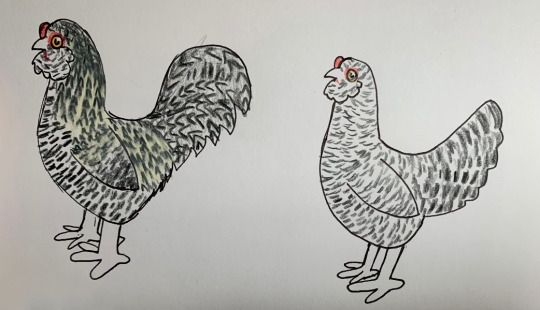
Both offspring would recieve the dominant sexlinked alleles from their father so they would both have white shanks, red combs, orange eyes, one copy of barring, and silver. The only difference would be that the males would recieve a copy of gold from their mothers so they would have a yellowish cast.
#bird genetics#chickens#sex-linked genes#sex-links#starling#barring#silver#dermal melanin inhibitor#zealand#chicken genetics
2 notes
·
View notes
Text
Magnificent chimkens
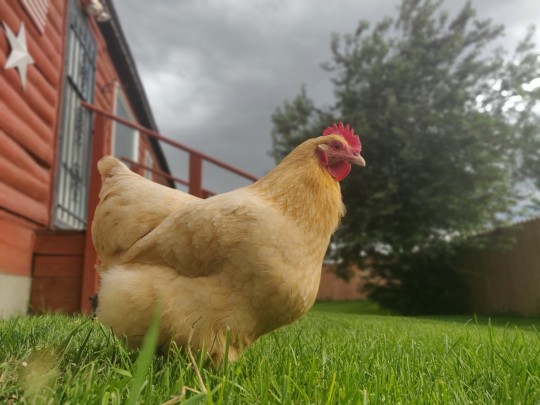
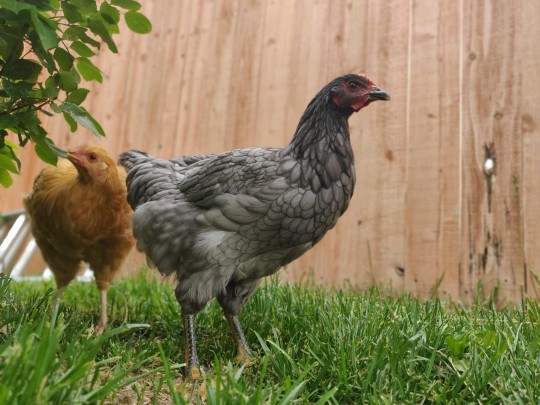
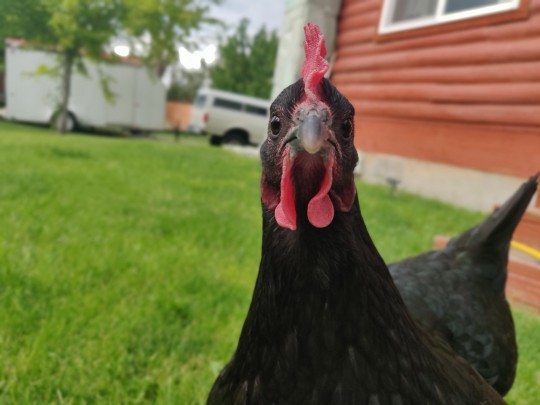
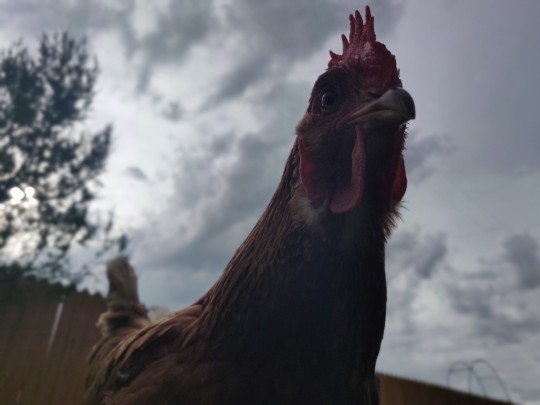
#backyard chickens#chickens#chimken#chickenblr#chooks#buff orpington#pullets#backyard hens#birbs#birblr#Sapphire gem#australorp
83 notes
·
View notes
Text
I've been keeping chickens in various capacities for a while, and I've noticed that in any given group of three hens, they inevitably develop three personalities, which I have decided to call Bossy, Baby, and Brainy.
Bossy: She's top chicken. She's the first one out the gate. She's big, she's loud, and the other chickens love her. She's best friends with Baby even though she picks on her relentlessly. She will happily peck a toddler in the face. If she wanders off on her own the other chickens will panic and fly across the garden to meet back up. Oh Dear God She Just Did An Eight Foot Vertical Leap Over The Fence. If there is an australorp in the trio, it's her.
Baby: She's scared of you. She's scared of the other chickens. She's scared of the treat container. She's scared of That Shadow Over There. Loves Bossy with all her heart and solves her problems by being close to to the Boss. Will viscously attack Brainy if she thinks she can get away with it. She is the first to get bored of treats or puzzles. You will NOT pick her up. If you've got a slower developing chick in the bunch, she grows up to be Baby. Given a group of four instead of three, there will be two Babies.
Brainy: She's got Final Girl energy. She's at the bottom of the pecking order but she makes up for it by being fast and clever. She's good at solving puzzles. If there's an unfamiliar treat she's more willing to try it than the others. Stays up late. She will obtain delicious treats only to have them get stolen by Bossy. Frequently becomes the friendliest of the group, splitting off from Bossy and Baby in order to hang out with you. If you need to let a toddler pet a chicken she's the best choice.
Of course, these can change with time and the introduction of other chickens. I had a Baby who turned into a fearless little rooster late in life. If you introduce a younger trio into an older trio they keep their individual trios intact until you lose an older chicken, and then the whole system restructers itself.
#chickens#backyard chickens#listen I have insomnia and this is the sort of thing I think about when I can't sleep
13 notes
·
View notes
Text
I don't exactly know how, but somehow we ended up getting 8 more chickens. The hen accepted the 3 little yellow ones (amberlinks) along with her own little yellow chick, but she doesn't like the 4 bigger dark ones (black sex links) or even the little dark one (Australorp).


The hen had left the rest of the eggs for hours, but we put them in the incubator just in case.
4 notes
·
View notes
Text


Thought I'd share some home stuff, since otherwise the content on here is slow 😮💨
My sister-in-law actually got me four pullet chicks! Pullet simply means they're all female. We still have 6 hatching eggs coming at the end of April that will hatch around the last week of May. I'm hoping for at least one rooster and 3 more hens from them. They'll be Black Australorps!
These chicks are of the Barnevelder breed!
Lastly, my blueberry and blackberry plants starting to take off. They'll need to be transfered soon to 30 gallon grow bags!
2 notes
·
View notes
Text
When I was a kid we had meat turkeys as well as chickens. Everyone probably knows what a bronze turkey looks like just from the name, so here's a chicken breed called australorp:

So the chickens and turkeys were all in together. The one australorp we had decided to go broody one year and was absolutely deadset on incubating a handful of non-fertile eggs (the eggs themselves changing daily didn't seem to deter her). A turkey hen also decided to brood that year, and since we had toms they were fertile and she was allowed to go through with it. The australorp however was not cool with this and immediately decided that it was HER nest and HER (turkey) eggs and would cram herself into the turkey box at any opportunity. The turkey however was also hellbent on sitting on those eggs and for a good week we thought the australorp had gone missing only to discover that the turkey had zero problems sitting on her as well as the eggs. She stayed there crammed under the turkey hen for the duration and wound up picking (and losing) a fight with the hen for custody of the chicks afterwards. Chickens are weird.

Chicken scientists please explain this

6K notes
·
View notes
Video
youtube
Cách xây dựng nhà tre cho gà, nuôi và chăm sóc gà
1. Quy hoạch và thiết kế
Xác định kích thước: Tùy thuộc vào số lượng gà, ước tính kích thước của chuồng. Một nguyên tắc nhỏ là 3-4 feet vuông mỗi con gà bên trong chuồng và 8-10 feet vuông mỗi con gà cho chạy ngoài trời.
Vị trí: Chọn khu vực thoát nước tốt, tốt nhất là trên cao để tránh ngập lụt. Đảm bảo nó có thể truy cập được và có đủ không gian để mở rộng trong tương lai.
Cân nhắc thiết kế: Bao gồm cá rô gà trống, hộp làm tổ, thông gió và dễ dàng tiếp cận để làm sạch và thu thập trứng. Tính linh hoạt và sức mạnh của Bamboo làm cho nó trở nên lý tưởng để tạo ra các thiết kế khác nhau, từ cấu trúc khung chữ A đơn giản đến các thiết kế phức tạp hơn.
2. Vật liệu và dụng cụ cần thiết
Vật liệu:
Sào tre (kích cỡ khác nhau)
Dải tre (để dệt tường)
Dây tự nhiên hoặc tổng hợp (để ràng buộc)
Vật liệu lợp tranh (tùy chọn, cho một cái nhìn truyền thống)
Dây gà hoặc lưới
Đinh và ốc vít
Bản lề và chốt (cho cửa ra vào)
Rơm hoặc dăm gỗ (cho giường)
Công cụ:
Cưa hoặc dao rựa (để cắt tre)
Khoan
Búa
Thước dây
Mức
Đục (để lắp khớp tre)
3. Quá trình thi công
Nền móng: Bắt đầu bằng cách san lấp mặt bằng và tạo ra một nền móng nâng lên bằng cách sử dụng các cọc tre lớn hơn. Bạn có thể đặt các cột trực tiếp xuống đất hoặc sử dụng chân xi măng để ổn định.
Xây dựng khung:
Bắt đầu với khung cơ sở và xây dựng, sử dụng cột tre làm giá đỡ cấu trúc chính.
Cố định các khớp bằng dây tự nhiên hoặc tổng hợp. Đảm bảo khung chắc chắn và bằng phẳng.
Tường và mái:
Đối với tường, dệt dải tre giữa các cột thẳng đứng hoặc sử dụng các tấm tre. Đảm bảo thông gió thích hợp bằng cách để lại khoảng trống hoặc sử dụng lưới.
Xây dựng khung mái và phủ nó bằng tranh, tấm tre hoặc bất kỳ vật liệu chống thấm phù hợp nào. Đảm bảo mái nhà có độ dốc để chống tích tụ nước.
Thiết lập nội thất:
Lắp đặt cá rô bằng cách sử dụng cột tre nằm ngang ở các độ cao khác nhau.
Xây dựng các hộp làm tổ bằng tre hoặc gỗ, đảm bảo chúng được nâng lên và dễ dàng tiếp cận.
Provide adequate ventilation, considering windows or vents covered with mesh to prevent predators.
Doors and Security:
Construct a door with bamboo and secure it with hinges and a latch. Ensure it's predator-proof and easy to operate.
Enclose the outdoor run with chicken wire or mesh, and check for any gaps that predators could exploit.
4. Finishing Touches and Maintenance
Bedding and Nesting Material: Spread straw or wood shavings inside the coop for bedding and nesting material.
Feeder and Waterer: Install a feeder and waterer at a comfortable height for the chickens.
Maintenance: Regularly clean the coop, replace bedding, and check for structural integrity. Inspect for signs of pests or predators and make necessary repairs.
Raising and Caring for Chickens
1. Choosing the Right Breed
Considerations: Climate, egg production, temperament, and purpose (eggs, meat, or dual-purpose).
Popular Breeds: Rhode Island Red, Leghorn, Sussex, Orpington, and Australorp.
2. Feeding and Nutrition
Starter Feed: For chicks, a high-protein starter feed is essential for the first 6-8 weeks.
Grower Feed: After 8 weeks, transition to a grower feed with lower protein.
Layer Feed: Once hens start laying, switch to layer feed rich in calcium to support eggshell production.
Supplements: Provide grit (for digestion) and oyster shells (for calcium).
Treats and Scraps: Offer sparingly; avoid harmful foods like chocolate, avocado, and raw beans.
3. Health and Hygiene
Regular Cleaning: Keep the coop clean and dry to prevent disease. Replace bedding regularly and clean feeders and waterers.
Pest Control: Watch for mites, lice, and worms. Use dust baths and treat infestations promptly.
Vaccination and Health Checks: Consider vaccinations for common diseases. Regularly check chickens for signs of illness, such as lethargy, loss of appetite, or unusual behavior.
4. Handling and Socialization
Gentle Handling: Approach chickens calmly and handle them gently to reduce stress.
Socialization: Spend time with your chickens to build trust. Chickens are social animals and enjoy human interaction.
5. Egg Collection and Storage
Regular Collection: Collect eggs daily to prevent breakage and discourage broodiness.
Storage: Store eggs in a cool, dry place. Refrigerate if needed, but avoid washing eggs until just before use to preserve their protective coating.
6. Seasonal Care
Winter Care: Provide extra bedding, ensure proper ventilation without drafts, and offer supplemental heat if necessary.
Summer Care: Ensure adequate shade, plenty of water, and good ventilation to keep chickens cool.
7. Legal and Ethical Considerations
Local Regulations: Check local zoning laws and regulations regarding backyard chickens.
Animal Welfare: Provide proper care, a clean living environment, and humane treatment. Avoid overcrowding and ensure chickens have enough space to roam.
Conclusion
Building a bamboo house for chickens is a sustainable and eco-friendly option. With proper care and attention, your chickens can thrive in their new home, providing fresh eggs and companionship. Regular maintenance and monitoring are essential to ensure the health and well-being of your flock
0 notes